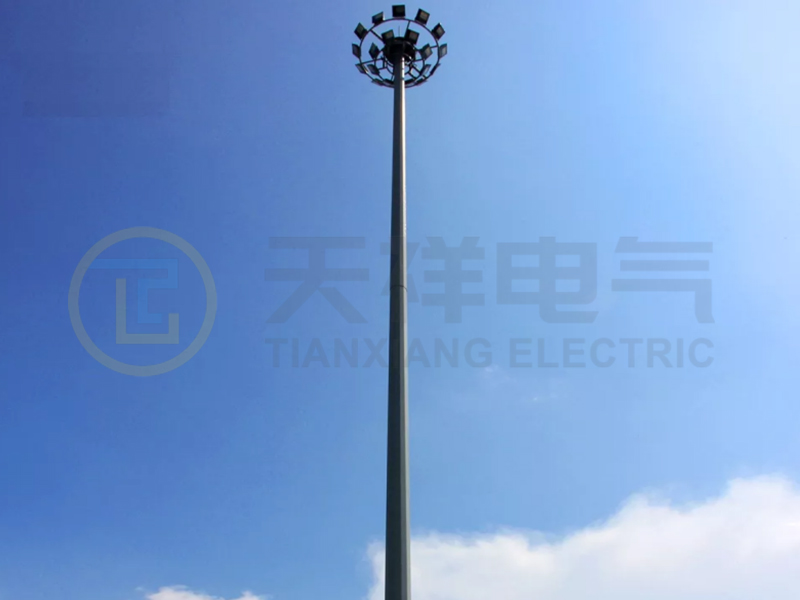High pole lights are an important part of urban and industrial lighting systems, providing illumination of large areas and ensuring safety and visibility in outdoor spaces. Calculating the configuration of your high pole lights is critical to ensuring optimal lighting coverage and energy efficiency. In this article, we’ll explore the key factors to consider when calculating your high pole lighting configuration and how to achieve the best lighting solution for your specific outdoor environment.
A. Assess area
For high pole lights, the first step in calculating a configuration is to assess the area that needs lighting. Factors such as the size and shape of the area, required light levels and any potential obstructions must be considered. This initial assessment will help determine the number of high pole lights required and their location to achieve even and adequate lighting coverage.
B. Height of pole
The next important factor to consider is the height of your high pole light. The height of the light pole will directly affect the distribution of light and the overall effect of the lighting system. Taller poles can provide wider coverage, but may require more powerful lights to maintain adequate light levels at ground level. On the other hand, shorter poles may require more frequent placement to achieve the same coverage, but they may be more cost-effective in terms of initial investment and maintenance.
C. Type and wattage of the fixture
In addition to height, the type and wattage of the fixture are also critical in determining the configuration of your high pole light. LED lights are a popular choice for high pole lighting due to their energy efficiency, long lifespan, and high lumen output. When calculating your configuration, it is important to choose the appropriate wattage and beam angle to ensure the desired light distribution and minimize light pollution.
D. Spacing
Additionally, the spacing between high pole lights is a key aspect of configuration calculations. Spacing depends on installation height, light output and the specific requirements of the area. A well-designed lighting layout will ensure that dark spots are minimal and light is evenly distributed throughout the area.
E. Lighting design standards and regulations
Another important consideration when calculating high pole light configurations are lighting design standards and regulations. Different regions may have specific guidelines regarding outdoor lighting, including light levels, glare control and energy efficiency requirements. Compliance with these standards is critical to ensuring lighting systems are compliant and meet necessary safety and environmental standards.
F. Impact on the environment
Moreover, the impact of high pole lights on the environment should not be ignored when calculating configurations. Light pollution, energy consumption and potential impacts on wildlife and ecosystems are all important factors to consider. High pole lighting configurations can be optimized to reduce environmental impact by selecting energy-efficient fixtures, implementing smart lighting controls, and minimizing light spill.
In summary, calculating the configuration of a high pole light requires a thorough assessment of lighting area, selection of appropriate fixtures, and compliance with lighting design standards and environmental considerations. By carefully considering these factors, efficient and effective lighting solutions can be created for outdoor spaces, ensuring safety, visibility and minimal environmental impact. Whether it’s a city street, a parking lot, a sports field or an industrial facility, the correct configuration of high pole lights is critical to creating a bright, safe outdoor environment.
Post time: Jul-18-2024





